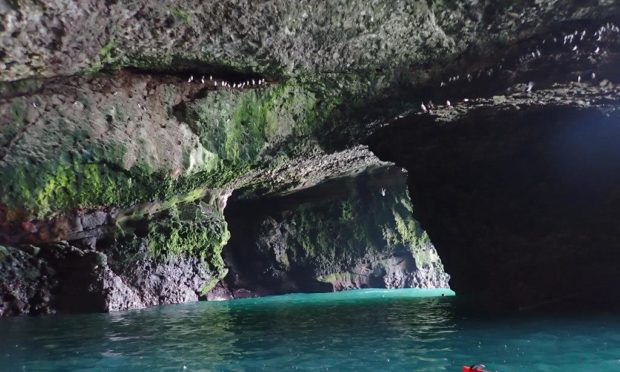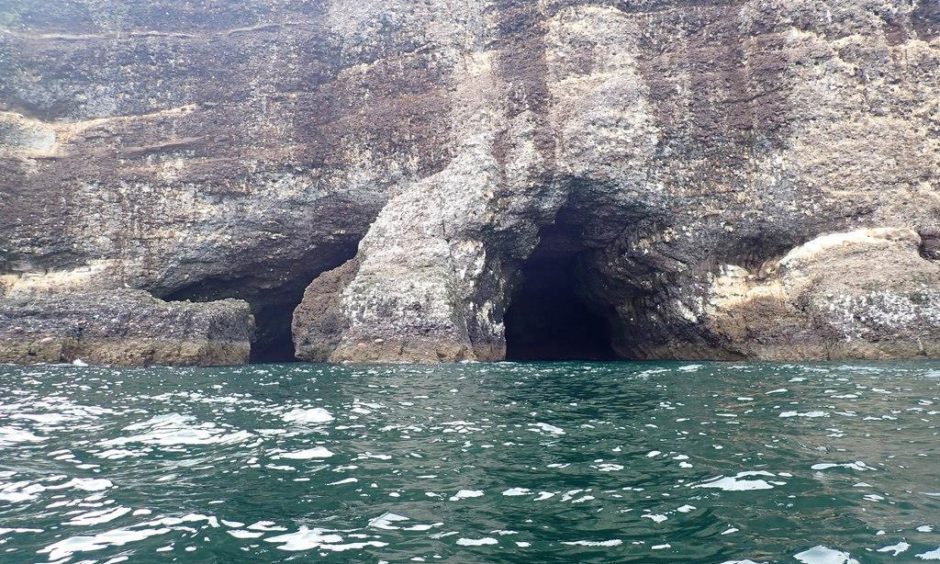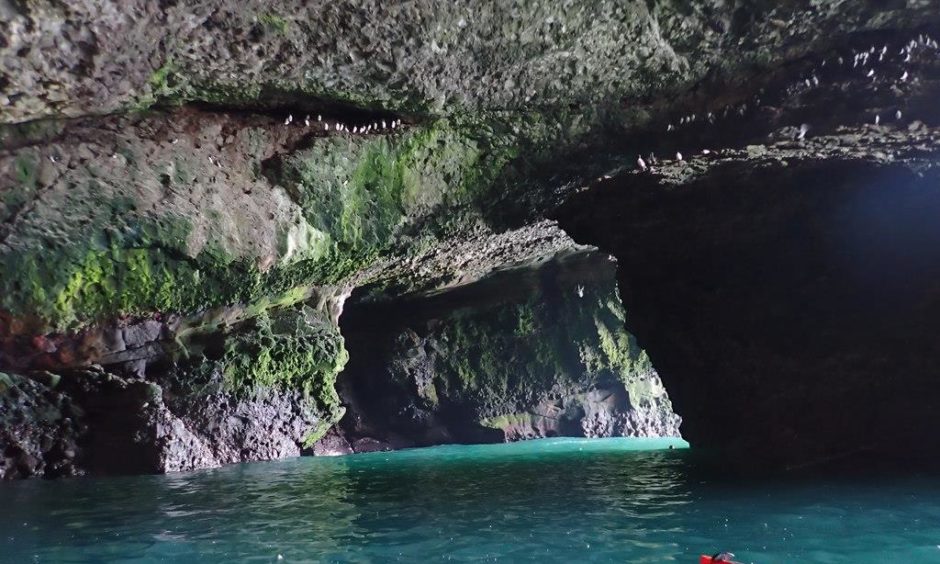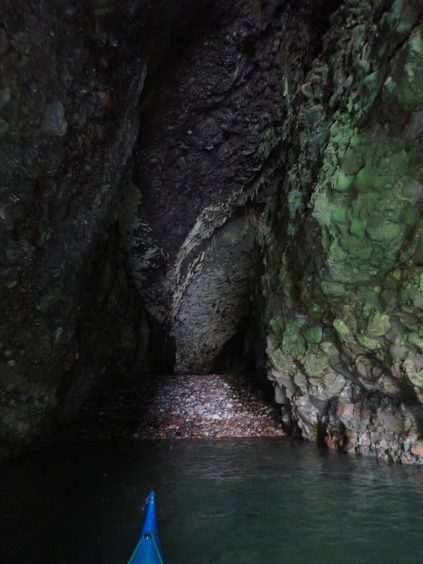A pensioner who took up caving during lockdown has made a key geological breakthrough, after identifying the longest sea cave in mainland Scotland.
Keen kayaker Nigel Feilden, 73, has spent the pandemic measuring the previously undocumented caves around Dunottar.
Having added more than 120 caves to his list since the first lockdown last March, he has now shown that one of them, Trough Cove, is the longest on the mainland.
The cave, with tunnels stretching 315 metres, is situated under the RSPB bird reserve at Fowlsheugh in Aberdeenshire, and is second in length only to Hol O’ Bordie on Papa Stour in Shetland, which is 350 metres long.
The Trough Cove find represents a major breakthrough, as it is almost twice as long as Stalactite Cave at Arbroath, which was previously thought to be the longest.
Mr Feilden, who lives at North Rayne, near Insch, took his findings, including a sketch plan of the cave, to the Grampian Speleological Group who have recorded them for posterity.
He said: “The Integrate Kayak Club in Stonehaven, who I kayak with, received a letter from Scottish Natural Heritage wondering if anyone would be interested in investigating so-called dark sea caves in the Buchan area south of Peterhead.
“That’s where my interest started and I then started looking at caves more locally.
“I got involved with the Grampian Speleological Group and started working away in the area from Arbroath up to Peterhead, across to Fraserburgh and further west.
“It’s been very fruitful since the first lockdown last March and I’ve had a lot of fun.
“Lockdown has certainly been productive.”
Though the Grampian Speleological Group has been researching Scotland’s caves for 60 years, Mr Feilden’s lockdown exploits serve as a reminder that there remain new finds to unearth.
He added: “It’s not easy to measure a sea cave.
“There are hand-held laser devices, but they only measure up to 30 metres.
“What I did was carry a couple of floats with just enough weight on them to hold them in place, then used a string on a winder with knots tied every five metres.
“I’m a kayaker who got interested in caving rather than the other way around, and I’m a bit of a fish out of water, so I was really chuffed to manage to record the longest sea cave on mainland Scotland.
“The longest sea cave previously recorded on the mainland was the Stalactite Cave at Arbroath, which was 165 metres, so to measure 315 metres was quite something.
“While Trough Cove isn’t one that I have ‘discovered’, to be the first to measure its length and to prepare a sketch plan of it, accurate for length, was very pleasing.
“And then for it to turn out to be the longest in mainland Scotland – and that by quite some distance – was doubly exciting.”
Mr Feilden’s find came just in time, with the breeding season for birds such as the guillemot approaching.
As part of the Fowlsheugh RSPB reserve, birds in the area shouldn’t be disturbed until late summer.
The Grampian Speleological Group, formed in 1961, is the oldest and largest caving club in Scotland.
Its members have discovered and extended caves all over Scotland and the British Isles – a process that continues today.
Further afield, members have participated in expeditions from Austria to Equador and Hawaii to Zimbabwe, and caved on all continents except Antarctica.
Based in Edinburgh, the group unites cavers throughout Scotland and further afield for the exploration of Scottish caves, with regular trips to other caving regions.
Most of Scotland’s caves have been discovered, extended and documented by GSG members, with new discoveries taking place even now, as Mr Feilden has proven.




